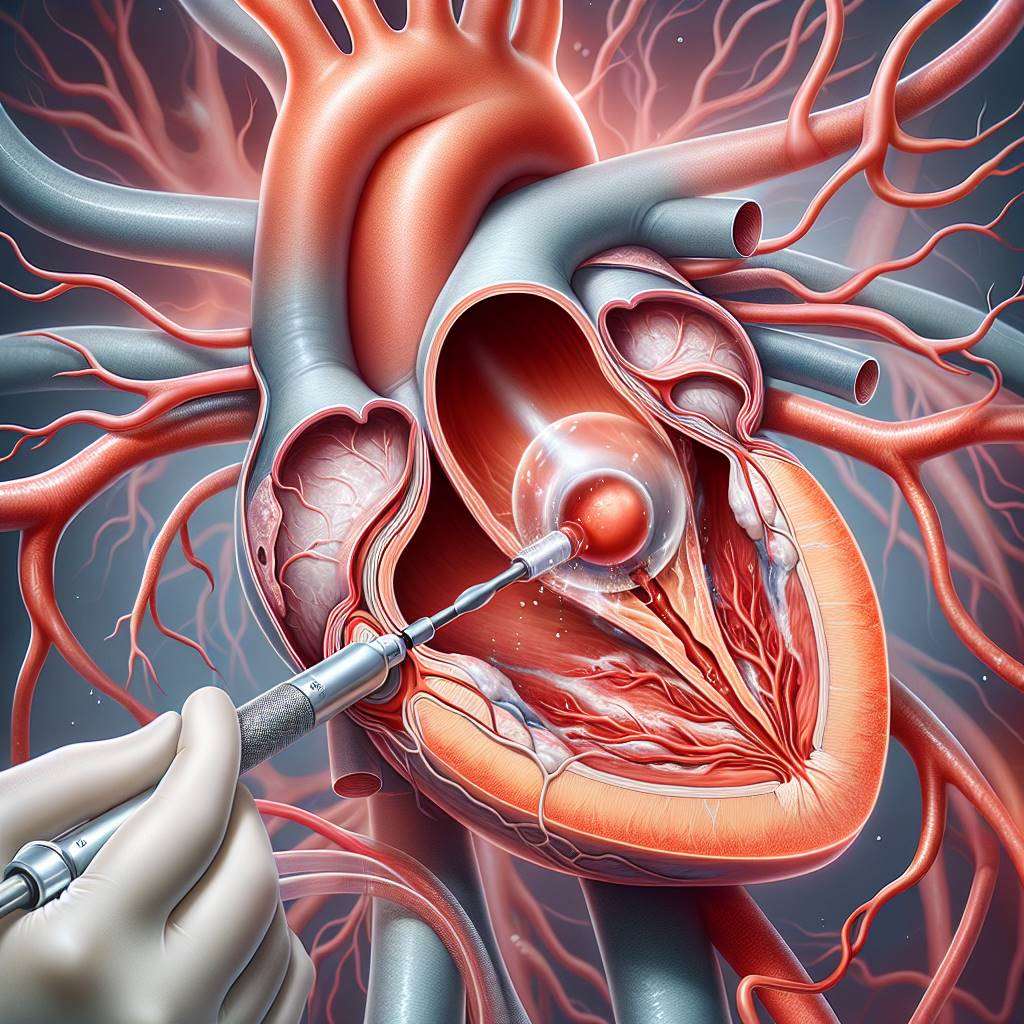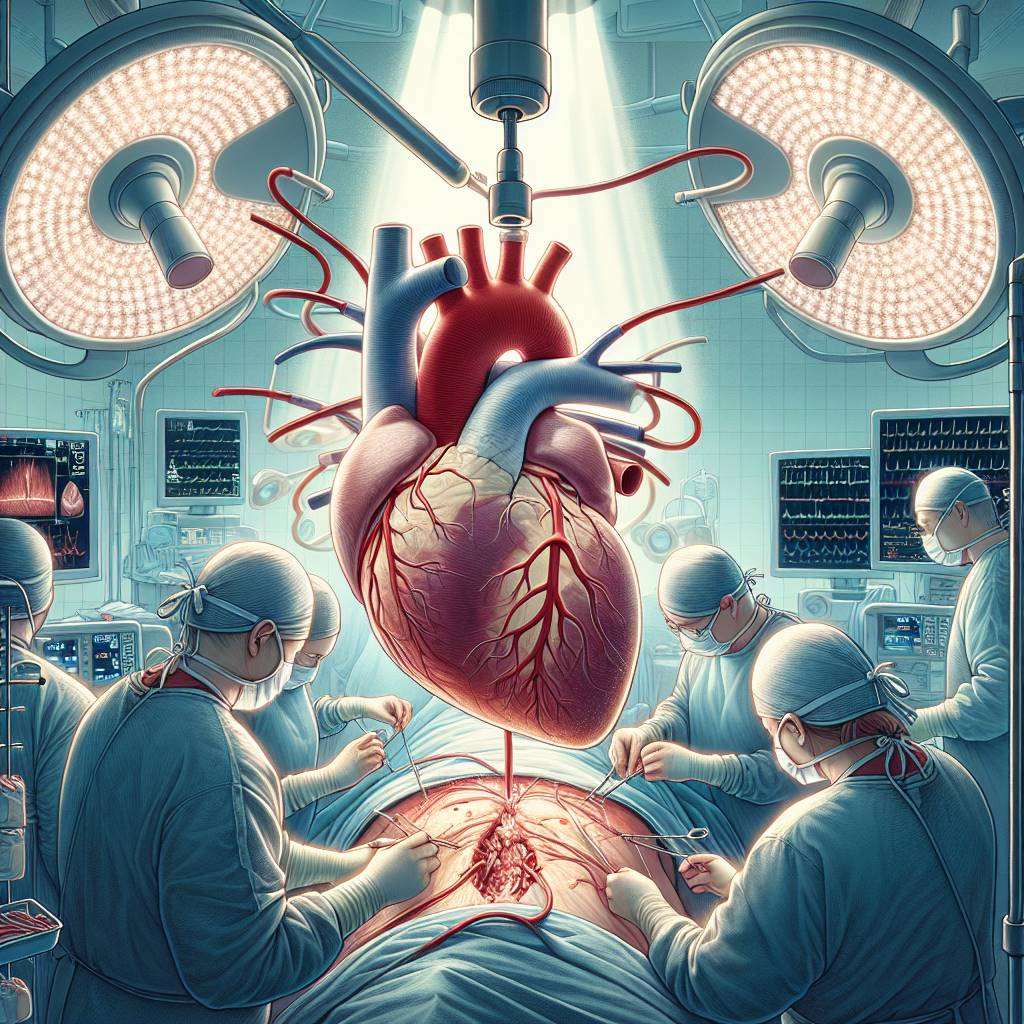Coronary angioplasty and bypass surgery are two critical treatments for managing coronary artery disease (CAD). Both procedures aim to restore blood flow to the heart, but they differ in approach and complexity. Understanding their safety and effectiveness is essential for patients facing these options, as the choice can significantly impact recovery and long-term health.
While angioplasty is a minimally invasive procedure, bypass surgery involves open-heart surgery. Each has its own risks and benefits, depending on the severity of the condition and the patient’s overall health. This article explores the differences, safety aspects, and factors to consider when choosing between these two life-saving treatments.
What Is Coronary Angioplasty and How Does It Work?
Coronary angioplasty, also known as percutaneous coronary intervention (PCI), is a minimally invasive procedure used to treat narrowed or blocked coronary arteries. It involves inserting a thin tube called a catheter into a blood vessel, usually in the groin or wrist, and guiding it to the affected artery. A small balloon at the catheter's tip is inflated to widen the artery and improve blood flow.
In most cases, a stent (a small mesh tube) is placed in the artery to keep it open and prevent future blockages. Angioplasty is often recommended for patients with mild to moderate coronary artery disease or those experiencing chest pain (angina). The procedure is quick, with a shorter recovery time compared to surgery, making it a preferred option for many.

Understanding Bypass Surgery: Procedure and Recovery Explained
Bypass surgery, or coronary artery bypass grafting (CABG), is a major surgical procedure used to treat severe cases of coronary artery disease. During the surgery, a healthy blood vessel from another part of the body, such as the leg or chest, is used to create a new pathway for blood to flow around the blocked artery. This restores blood supply to the heart muscle.
Recovery from bypass surgery typically takes several weeks, as it involves open-heart surgery. Patients may experience fatigue, soreness, and restrictions on physical activity during this period. However, CABG is highly effective for patients with multiple blockages or those who are not candidates for angioplasty. It provides long-term relief from symptoms and reduces the risk of heart attacks.
Key Differences Between Angioplasty and Bypass Surgery
While both angioplasty and bypass surgery aim to improve blood flow to the heart, they differ in procedure, recovery, and suitability. Here’s a comparison:
| Aspect |
Angioplasty |
Bypass Surgery |
| Procedure Type |
Minimally invasive |
Open-heart surgery |
| Recovery Time |
1–2 days |
Several weeks |
| Best For |
Mild to moderate blockages |
Severe or multiple blockages |
| Risk Level |
Lower |
Higher |
Understanding these differences helps patients and doctors make informed decisions based on the severity of the condition and individual health factors.
Which Is Safer: Angioplasty or Bypass Surgery?
The safety of angioplasty versus bypass surgery depends on various factors, including the patient’s age, overall health, and the extent of coronary artery disease. For patients with single or mild blockages, angioplasty is generally safer due to its minimally invasive nature and shorter recovery time.
However, for patients with multiple or complex blockages, bypass surgery may offer better long-term outcomes despite being more invasive. Studies suggest that CABG reduces the risk of repeat procedures and provides more durable results in such cases. Ultimately, the choice should be made after consulting a cardiologist and considering the patient’s specific medical condition.
Risks and Benefits of Coronary Angioplasty
Like any medical procedure, coronary angioplasty has its risks and benefits. The primary advantage is its minimally invasive nature, which results in a shorter hospital stay and faster recovery. It is highly effective in relieving symptoms like chest pain and improving quality of life for patients with mild coronary artery disease.
However, angioplasty carries some risks, such as bleeding, infection, or the possibility of the artery narrowing again (restenosis). In rare cases, complications like heart attack or stroke may occur during the procedure. Patients should discuss these risks with their doctor to determine if angioplasty is the right treatment for their condition.
Is Bypass Surgery the Better Option for Heart Patients?
When it comes to treating severe coronary artery disease (CAD), both bypass surgery and coronary angioplasty are effective options. However, the choice depends on the patient’s condition, the severity of blockages, and overall health. Bypass surgery, also known as coronary artery bypass grafting (CABG), is often recommended for patients with multiple blockages or complex artery conditions.
While bypass surgery is more invasive, it provides long-term relief by creating a new pathway for blood flow. This procedure is particularly beneficial for patients with diabetes or those with left main coronary artery disease. However, it involves a longer recovery period and higher initial risks compared to angioplasty.

When Should You Choose Angioplasty Over Bypass Surgery?
Coronary angioplasty, also called percutaneous coronary intervention (PCI), is a minimally invasive procedure. It is often the preferred choice for patients with fewer blockages or those who cannot undergo major surgery due to age or other health conditions. During angioplasty, a small balloon is used to open narrowed arteries, and a stent is placed to keep them open.
Patients with stable angina or mild symptoms of CAD may benefit from angioplasty. It has a shorter recovery time and lower risk of complications compared to bypass surgery. However, it may not be suitable for individuals with extensive artery damage or multiple blockages. Consulting a cardiologist is crucial to determine the best treatment option.
Bypass Surgery vs Angioplasty: Recovery Time Comparison
Recovery time is a significant factor when choosing between bypass surgery and angioplasty. Bypass surgery typically requires a hospital stay of 5–7 days, followed by several weeks of rest and rehabilitation. Full recovery may take up to 12 weeks, depending on the patient’s overall health and adherence to post-surgery care.
In contrast, angioplasty patients usually stay in the hospital for 1–2 days and can resume normal activities within a week. However, the long-term success of angioplasty may depend on lifestyle changes and medication adherence. The table below highlights the key differences in recovery:
| Procedure |
Hospital Stay |
Full Recovery Time |
| Bypass Surgery |
5–7 days |
8–12 weeks |
| Angioplasty |
1–2 days |
1–2 weeks |
Cost Comparison: Coronary Angioplasty vs Bypass Surgery
The cost of treatment is an important consideration for many patients in India. Bypass surgery is generally more expensive than angioplasty due to the complexity of the procedure and longer hospital stay. On average, bypass surgery can cost between ₹2,00,000 and ₹5,00,000, depending on the hospital and surgeon’s expertise.
Angioplasty, on the other hand, is relatively affordable, with costs ranging from ₹1,50,000 to ₹3,50,000. However, the need for multiple stents or repeat procedures can increase the overall expense. It is essential to discuss insurance coverage and payment options with your healthcare provider to make an informed decision.
Who Is a Candidate for Coronary Angioplasty?
Coronary angioplasty is suitable for patients with mild to moderate coronary artery disease. It is often recommended for individuals experiencing chest pain (angina) or those who have had a heart attack due to a blocked artery. Angioplasty is also ideal for patients who cannot undergo bypass surgery due to age or other medical conditions.
However, it may not be effective for patients with multiple blockages or severely calcified arteries. A thorough evaluation, including an angiogram, is necessary to determine if angioplasty is the right choice. Always consult a cardiologist to understand the risks and benefits of this procedure based on your specific health condition.
Bypass Surgery: Long-Term Outcomes and Success Rates
Bypass surgery, also known as coronary artery bypass grafting (CABG), is a highly effective treatment for severe coronary artery disease. It involves creating a new pathway for blood flow around blocked arteries using a graft, often taken from the leg or chest.
Studies show that bypass surgery offers excellent long-term outcomes, especially for patients with multiple blockages or diabetes. It significantly reduces the risk of heart attacks and improves overall survival rates. However, it is a major surgery and requires a longer recovery period compared to other treatments like angioplasty.
Patients undergoing bypass surgery often experience improved quality of life, with reduced symptoms like chest pain and fatigue. While the procedure is generally safe, potential risks include infection, bleeding, or complications related to anesthesia.

Angioplasty vs Bypass: Which Has Fewer Complications?
When comparing angioplasty and bypass surgery, the risk of complications varies based on the patient's condition and the severity of coronary artery disease. Angioplasty, a minimally invasive procedure, typically has fewer immediate risks and a shorter recovery time.
Bypass surgery, while more invasive, is often recommended for patients with complex blockages or multiple affected arteries. It carries a slightly higher risk of complications such as infection or blood clots but offers more durable results in certain cases.
- Angioplasty: Lower risk of infection, shorter hospital stay, but higher chance of needing repeat procedures.
- Bypass Surgery: Higher initial risks but better long-term outcomes for severe cases.
Ultimately, the choice depends on individual health factors and the advice of a cardiologist.
How to Decide Between Angioplasty and Bypass Surgery
Deciding between coronary angioplasty and bypass surgery requires careful consideration of several factors. These include the number of blocked arteries, the patient’s overall health, and the presence of conditions like diabetes or kidney disease.
Angioplasty is often preferred for patients with single or less complex blockages, as it is less invasive and offers quicker recovery. On the other hand, bypass surgery is recommended for those with multiple blockages or severe coronary artery disease, as it provides more comprehensive treatment.
Consulting with a cardiologist is crucial. They may recommend diagnostic tests like an angiogram to determine the best course of action. Patients should also consider their lifestyle, recovery expectations, and potential risks before making a decision.
Coronary Angioplasty vs Bypass: What Doctors Recommend
Doctors often base their recommendations on the severity of the patient’s condition and their overall health. For patients with mild to moderate coronary artery disease, angioplasty is usually the first-line treatment due to its minimally invasive nature and quick recovery.
However, for patients with advanced disease, multiple blockages, or conditions like diabetes, bypass surgery is often the preferred option. It provides a more permanent solution and reduces the risk of future cardiac events.
Doctors also consider patient-specific factors such as age, lifestyle, and the presence of other medical conditions. Regular follow-ups and adherence to prescribed medications are essential regardless of the chosen treatment.
Patient Experiences: Angioplasty vs Bypass Surgery Stories
Many patients share positive experiences with both angioplasty and bypass surgery, depending on their unique circumstances. For instance, patients undergoing angioplasty often report quick relief from symptoms like chest pain and a faster return to daily activities.
On the other hand, bypass surgery patients frequently highlight the long-term benefits, such as improved heart function and reduced risk of future complications. While the recovery period is longer, many feel the results are worth the effort.
Hearing real-life stories can help others make informed decisions. It’s important to remember that every patient’s journey is different, and outcomes depend on factors like pre-existing conditions and adherence to post-treatment care.
Best Coronary Angioplasty Doctors in India
Two highly reputed doctors specializing in Coronary Angioplasty in India are Dr. Balbir Singh, Chairman of Cardiology at Max Super Speciality Hospital, Delhi, with over 30 years of experience, and Dr. Naresh Trehan, Chairman and Managing Director of Medanta - The Medicity, Gurugram, with over 40 years of experience. Both are globally recognized for their expertise and contributions to interventional cardiology.
Learn more on best coronary angioplasty doctors in india
Best Coronary Angioplasty Hospitals in India
Two leading hospitals for Coronary Angioplasty in India are Fortis Escorts Heart Institute, Delhi, known for its advanced interventional cardiology and robotic-assisted procedures, and Apollo Hospitals, Chennai, offering state-of-the-art cardiac care and international patient services. Both hospitals are NABH and JCI accredited, ensuring adherence to global standards.
Find more best coronary angioplasty hospitals in india
Coronary Angioplasty Cost in India
The cost of Coronary Angioplasty in India typically ranges from INR 1,50,000 to INR 3,50,000 (approximately USD 1,800 to USD 4,200). Factors influencing costs include the hospital's category, doctor's expertise, and procedure complexity. The average hospital stay is 1-3 days. India offers a significant cost advantage compared to Western countries, with options for medical insurance or third-party financing.
Learn coronary angioplasty cost in india
Coronary Angioplasty Treatment in India
Coronary Angioplasty in India involves inserting a catheter with a balloon to open blocked arteries, often followed by stent placement. Advanced technologies like drug-eluting stents and intravascular imaging are widely used. Recovery typically takes 1-2 weeks. Top hospitals in India adopt global medical protocols and innovations such as robotic-assisted techniques for enhanced precision.
Learn on Coronary Angioplasty Treatment in India
FAQs
1. What is the difference between Coronary Angioplasty and Bypass Surgery?
Coronary Angioplasty is a minimally invasive procedure to open blocked arteries using a balloon and stent, while Bypass Surgery involves creating a new pathway for blood flow using a graft. The choice depends on the severity of blockages and patient health.
2. Which procedure has a faster recovery time?
Coronary Angioplasty generally has a faster recovery time of 1-2 weeks compared to Bypass Surgery, which may take 6-8 weeks for full recovery.
3. Are both procedures safe for elderly patients?
Yes, both procedures are safe for elderly patients when performed by experienced specialists. However, the choice depends on individual health conditions and risks.
4. How long do the results of Coronary Angioplasty last?
The results of Coronary Angioplasty can last for several years, especially with lifestyle changes and medications. However, restenosis (re-narrowing) may occur in some cases.
5. Can I undergo Coronary Angioplasty if I have diabetes?
Yes, patients with diabetes can undergo Coronary Angioplasty. However, careful management of blood sugar levels is crucial for optimal outcomes.
6. What are the risks associated with Bypass Surgery?
Risks of Bypass Surgery include infection, bleeding, stroke, or heart attack. However, these risks are minimized with advanced surgical techniques and experienced surgeons.
7. Is medical insurance available for these procedures in India?
Yes, most medical insurance policies in India cover Coronary Angioplasty and Bypass Surgery. It is advisable to check with your insurer for specific coverage details.
8. How do I choose between Angioplasty and Bypass Surgery?
The choice depends on factors like the number of blockages, their location, and overall health. Your cardiologist will recommend the most suitable option after evaluating your condition.
9. Are these procedures available for international patients in India?
Yes, India is a popular destination for international patients seeking Coronary Angioplasty and Bypass Surgery, offering high-quality care at affordable costs.
10. Can lifestyle changes prevent the need for these procedures?
Yes, adopting a heart-healthy lifestyle, including a balanced diet, regular exercise, and avoiding smoking, can reduce the risk of coronary artery disease and the need for invasive procedures.
Understanding Angioplasty: Stents vs. Bypass Surgery
Angioplasty is a common procedure used to treat narrowed or blocked arteries, but patients often wonder about the best approach for their condition. One key consideration is whether to opt for angioplasty with a stent or without. To explore the benefits and drawbacks of each method, check out this insightful article on angioplasty with or without stent.
Additionally, the decision between angioplasty and bypass surgery can be complex. Doctors typically recommend angioplasty for patients with specific conditions, particularly when the blockage is not extensive. For a deeper understanding of when angioplasty is preferred over bypass surgery, read more in this detailed blog on angioplasty recommendations.
Ultimately, discussing your individual health needs with a healthcare professional is crucial to determine the most suitable treatment option for you.